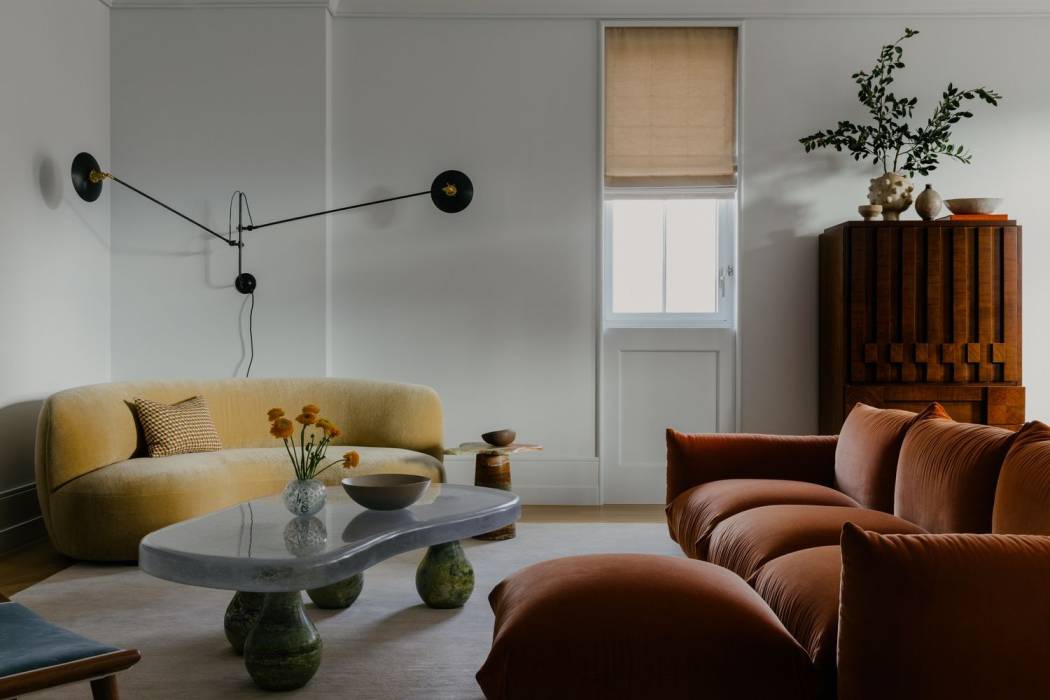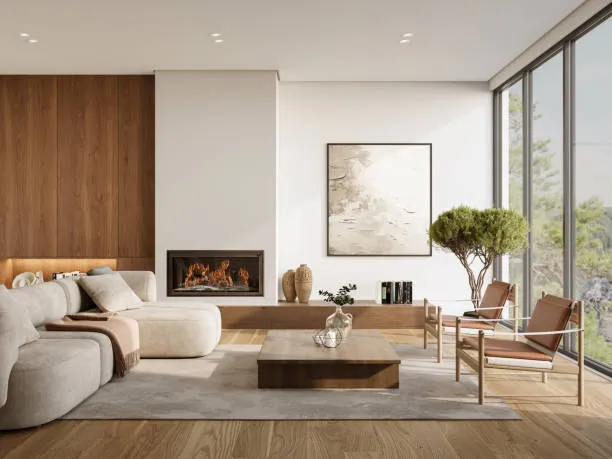Selecting the right rug size for living room is important for any space. A rug is not just decoration but also a part of the structure of the room. If the rug is too small the room can look empty. If the rug is too big it can cover too much of the floor. The correct size makes the room look balanced. Many people also search for how to choose living room because the right choice changes the entire look. Rugs are also linked to comfort and style, especially when using modern living room rugs.
The function of rugs extends beyond decoration. Rugs connect furniture pieces and give balance to the room. The correct rug size for living room ensures that furniture placement is clear. A rug can visually enlarge the area, define seating zones, and increase comfort. Using modern living room rugs with proper measurements can transform an empty floor into a structured layout.
Read Also: Luxury Black and White Living Room: Timeless Elegance Meets Modern Design
Standard Rug Sizes In Cm

To select correctly, reference to standard rug sizes in cm is required. Common sizes include:
- 120 cm x 180 cm: Small, used for compact rooms.
- 160 cm x 230 cm: Medium, often used for standard seating layouts.
- 200 cm x 300 cm: Large, fits under sofas and coffee tables.
- 250 cm x 350 cm: Extra-large, suitable for open-plan areas.
- 300 cm x 400 cm: Oversized, often used in big living rooms.
Understanding these measurements helps when learning how to choose rug size for living room.
When selecting rugs, it is important to understand standard rug sizes in cm. Rugs are produced in fixed sizes that fit most homes. Small sizes are useful for compact spaces. Medium sizes are often used in standard homes. Large and oversized sizes are used in big or open-plan rooms. Knowing the standard sizes helps to compare room size with rug size. A common measurement is one hundred sixty centimetres by two hundred thirty centimetres for a medium rug, two hundred centimetres by three hundred centimetres for a large rug, and three hundred centimetres by four hundred centimetres for oversized rugs. These measurements are important link when deciding the best rug size for living room.
How to choose rug size for living room?
The process of how to choose rug size for living room is based on the relation between the furniture and the rug. In large living rooms a rug can be placed under all furniture to create one single connected area. In medium rooms a rug can hold only the front legs of the sofa and chairs to give structure. In small rooms sometimes the rug is placed only under the coffee table because space is limited. Each method still depends on correct proportion. A rug should not be too far inside or too far outside the furniture.
Balance is important in every case. A rug should leave equal space on all sides of the furniture when possible. For example, a rug that extends twenty to thirty centimetres beyond the sofa on each side looks even and correct. If the rug is smaller than the coffee table only, the space looks incomplete. If the rug covers too much floor and touches walls unevenly, the space looks crowded. The right rug size for living room keeps the floor visible but also connects all furniture.
The same principles also apply in other rooms. Knowing the correct carpet size for bedroom is important too. In bedrooms a large carpet can cover the entire area under the bed and the nightstands. A medium carpet can cover two thirds of the bed length. Narrow carpets or runners can be placed on both sides of the bed. Common sizes for bedrooms are one hundred sixty centimetres by two hundred thirty centimetres and two hundred centimetres by three hundred centimetres. Just like in living rooms, rugs in bedrooms help to create balance and comfort.
The impact of rug size goes beyond function. A small rug in a big living room looks lost. A large rug in a small room can make it look smaller. The correct rug shows the shape of the room clearly. Using modern living room rugs with correct proportions can create a clean and organized design. This is why size choice is as important as colour or pattern.
Materials also interact with rug size. Thick wool rugs in small spaces can make the floor feel heavy. Large cotton or synthetic rugs in big rooms feel lighter and spread evenly. When planning rug size for living room, material should also be considered. A large soft rug in a sitting area feels warm and comfortable. A small thin rug under a table feels neat and light. Size and material together create the overall effect.
Different layouts require different rug sizes. Small living rooms often use rugs around one hundred sixty centimetres by two hundred thirty centimetres. Medium living rooms often use two hundred centimetres by three hundred centimetres. Large living rooms or open plans often use two hundred fifty centimetres by three hundred fifty centimetres or three hundred centimetres by four hundred centimetres. These are standard rug sizes in cm and can be used as guidelines. In open plans rugs are also used to separate areas. One rug can define the living area while another defines the dining area. Without rugs the space looks too open and undefined.
You May Also Like: Minimalist Mid Century Modern Living Room: Transform Your Space
Modern living room rugs

The popularity of modern living room rugs in 2025 shows that people prefer clear proportions. Large rugs are popular in wide open living rooms to create hotel-like spaces. At the same time simple medium rugs are chosen for minimal homes. Unique modern living room rugs in oversize dimensions are trending but standard sizes are still used in most homes. Custom rugs are also chosen when the room has irregular shapes. Custom sizes are higher in cost but they allow exact fitting.
When rugs are chosen, mistakes are possible. A rug that is smaller than the coffee table only makes the area look disconnected. A rug that is too big and covers almost all the floor removes proportion. A rug that blocks doors or sits unevenly under chairs creates problems. Correct measurement prevents these mistakes. The best way to choose is to measure the floor, measure the furniture, and then match with standard rug sizes in cm.
The relation between size and colour is also important. A large dark rug can reduce light in the room. A small pale rug may look invisible. The correct rug size for living room combined with the correct colour makes the space look balanced. A medium rug in neutral tones often works well in most homes. A large rug in bright colours can be a central feature if the space is big enough.
Furniture also affects rug choice. Sofas look balanced when the rug extends past their sides. Sectionals need larger rugs to cover the full outline. Coffee tables need rugs that extend beyond their surface. Accent chairs are best placed with their front legs on the rug. Each piece of furniture has to relate correctly to the rug dimensions. This creates one connected area instead of many separate parts.
Carpet size for bedroom
The carpet size for bedroom is always based on proportion. The floor must be measured. The carpet must be measured. The rug must extend beyond the limits but not too far. The final effect should look even from all sides. This process is simple but requires attention. Once the size is correct, colour and material can be added.
In conclusion, the selection of the right rug size is a technical process. It depends on standard rug sizes in cm, furniture placement, and room dimension. The same rules also guide the correct carpet size for bedroom. A rug that is too small or too large creates inequity. A rug that is correct in size makes the living room complete. When combined with modern living room rugs, the correct size makes structure, comfort, and clarity in design.

